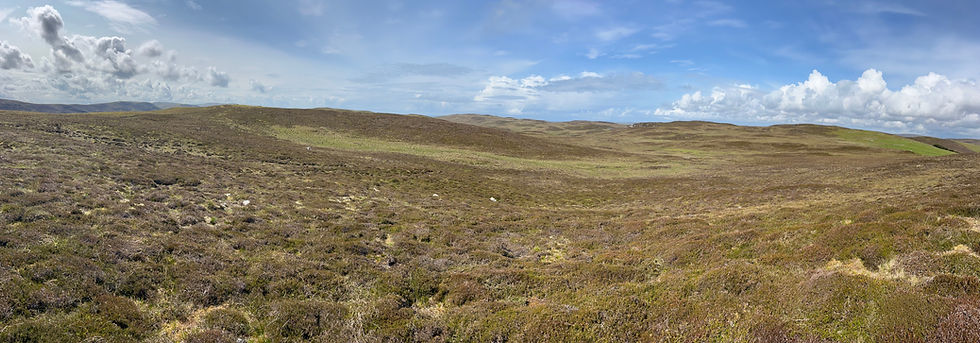Site in Focus - Troni Shun
- Stephen Jennings

- Feb 7, 2018
- 3 min read
Location, Location, Location: houses in Neolithic/Bronze Age Shetland.

The first settlers we know of came to the south end of Shetland in the late Mesolithic/early Neolithic period. It is unclear whether these were hunter gatherers or early farmers still heavily dependent on marine resources. Their midden (excavated at West Voe Beach, Sumburgh) is full of evidence of the plentiful marine life available to them, everything from shellfish to sea birds to cetaceans. They may not have lived here all year round, it is possible they were seasonal migrants coming up from the south via Fair Isle.
As farming spread north more people came to Shetland, this time bringing with them livestock and grain. Isotopic analysis of human remains from this period, alongside the evidence from West Voe and Jarlshof, suggests a struggle to survive and continued heavy reliance on marine resources (Melton et al 2017). Gradually people adapted to life on Shetland and learnt to work with the climate and local resources and farming spreads across the archipelago. With farming comes clearance and, though commonly Shetland is often presumed to have always been treeless, there is evidence for a covering of scrub and small trees across the landscape. Once these were cleared by prehistoric farmers a combination of grazing, soil slippage and lack of shelter for saplings would have made it very hard for them to re-establish.
Permanent settlements and boundaries accompany agriculture, whereas hunter gatherer groups are nomadic, and is driven by the seasonal availability of plants and the movement and behaviour of animals. The first visible changes to the Shetland landscape come during this period, deforestation. It was accompanied by the construction of field walls - a stone foundation with turf above, very similar to the crofting period “feely dykes” - and houses.
Predictably these houses tend to show a preference for south facing slopes, are well-drained and sunny. They may have ‘porches’ protecting their door from the weather and sit within enclosures immediately beside or around the house. They were built primarily of stone, often very substantial boulders, with a hearth in the centre (or slightly off centre) and ‘cells’ divided by large stone orthostats.
Many of these houses are still visible as earthworks in the landscape and often beneath crofting period plantiecrubs, small enclosures used for raising young kale plants which have reused much of their stone. The foundations of field walls can also be seen snaking across the landscape.
During July 2016 and 2017 Archaeology Shetland members have volunteered on an excavation near the village of Walls in the West Mainland of Shetland. The project is led by Claire Christie of the University of Aberdeen as part of her doctoral research into Neolithic and Bronze Age settlement systems on the West Mainland. The dig focussed on a probable prehistoric house site with adjoining enclosure. Trenches were opened within the house itself, across the house wall, across the enclosure wall and across the wall of a nearby feature (possible house or cairn). Quantities of rough stone tools were found within the house and the walls, in accordance with prehistoric occupation. Soil samples were taken throughout and Kubiena samples were also taken where possible. These samples will be used to example soil micromorphology and environmental evidence which can indicate plant species growing in the vicinity of the site during the period that the house was occupied.
For Further Information:









Comments